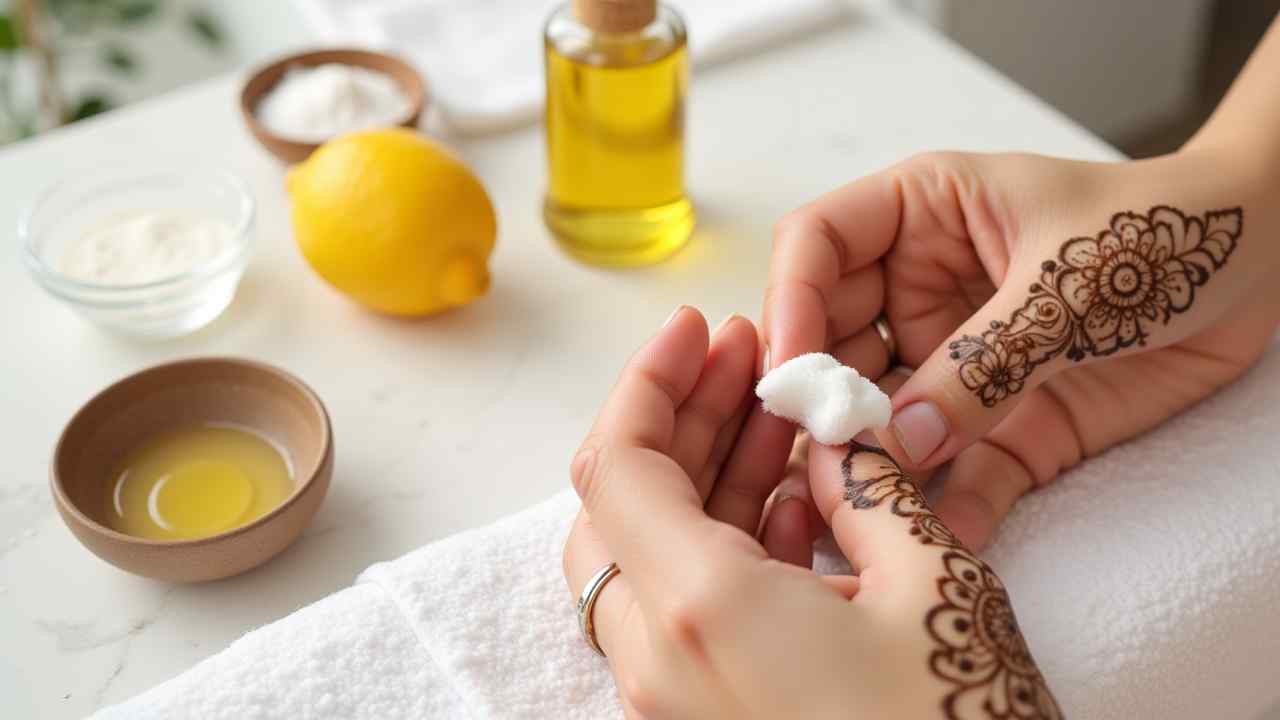
🌿 How to Remove Mehndi From Skin (5 Gentle & Effective Methods)
🌿 How to Remove Mehndi From Skin (5 Gentle Fading Methods) 🌿
Mehndi, or henna, is a beautiful form of temporary body art. The rich, dark stain is perfect for celebrations. But sometimes you need it to fade a little faster. Maybe it has started to look patchy, or you have an event to attend.
It is important to know that you cannot instantly wash off a henna stain. The dye bonds with the top layer of your skin. The only way to remove it is to exfoliate those skin cells. So, how do you remove mehndi from skin effectively?
The secret is gentle and repeated exfoliation. You want to speed up your skin's natural shedding process. This guide will show you five safe and easy methods. Let's start fading that stain. ✨
🤔 How Does Henna Work (and Why is it Hard to Remove)?
Understanding how henna works is key to removing it. The henna plant contains a molecule called lawsone. This molecule binds to the keratin in your skin. It literally stains the outermost, dead layer of your skin cells.
This is why you cannot just wipe it away. The stain is part of your skin's surface. It will only disappear completely as your skin naturally exfoliates. This process usually takes one to three weeks. Our goal is to safely accelerate this process.
The most important rule is to be gentle. Harsh scrubbing will only irritate your skin. It will not remove the stain any faster. Patience is a virtue in this process.
Method #1: How Can You Use a Soaking Method?
Soaking your skin is a great first step. It helps to soften the top layer of skin. This makes it much easier to exfoliate the stained cells. You have a couple of excellent options for this.
Soaking in Oiled Water: Add a generous amount of a body oil or coconut oil to a warm bath. Soak for at least 20 minutes. The oil helps to break down the henna pigment. It also moisturizes your skin.
Soaking in Salt Water: Salt is a natural exfoliant. Dissolve a half-cup of Epsom salt in a basin of warm water. Soak your hands or feet for about 20 minutes. This will help to lift the dead skin cells.
Method #2: Can You Use a Gentle Scrub?
After soaking, gentle exfoliation is your next best step. This will physically buff away the stained skin cells. You can use a store-bought scrub or make your own. Remember to be gentle.
A simple sugar scrub is a great choice. Mix sugar with coconut or olive oil to form a paste. Gently rub this paste on the stained area in a circular motion. Use a soft washcloth or an exfoliating mitt for best results. Do this for a few minutes and then rinse.
Method #3: What is the Lemon and Baking Soda Trick?
This is a classic lightening method. The baking soda provides a mild abrasive action. The citric acid in the lemon juice is a natural lightening agent. It is a powerful combination for how to remove mehndi from skin.
How to do it: Create a thick paste with baking soda and a little fresh lemon juice. Apply the paste to the mehndi design. Let it sit for about 10-15 minutes, or until it dries. Then, gently scrub it off with a circular motion. Rinse the area well and apply a thick moisturizer. 🍋
Method #4: Can Makeup Remover or Micellar Water Help?
Yes, this can be a very gentle option. Makeup removers and micellar water are designed to break down pigments. While they are made for makeup, they can also work on a fading henna stain. This is a great method for sensitive skin.
Soak a cotton pad in an oil-based makeup remover or micellar water. Hold the pad on the stain for a minute. Then, begin to rub the area gently. Repeat this process a few times. It can help to lift some of the surface pigment.
After any of these methods, always apply a rich moisturizer. Exfoliation can be drying. Keeping your skin hydrated and healthy is essential. 💧